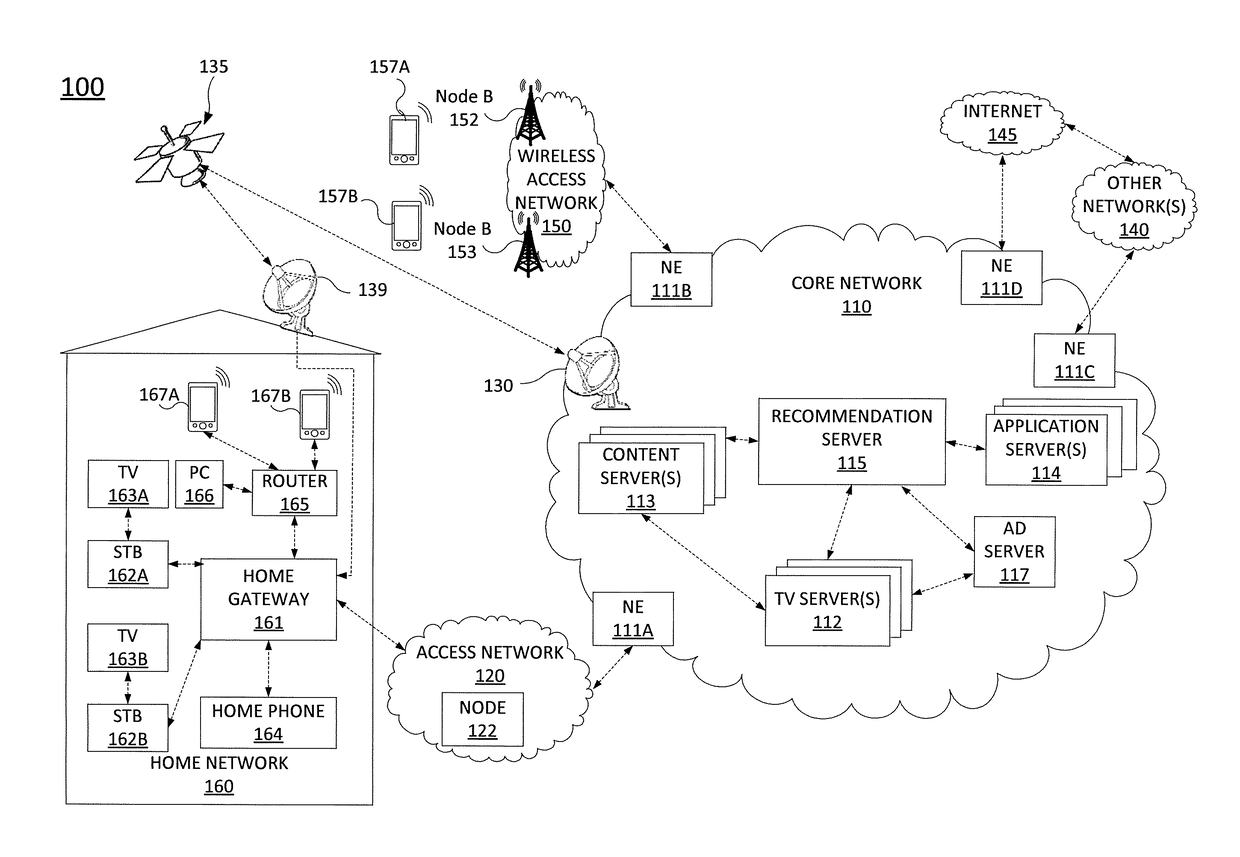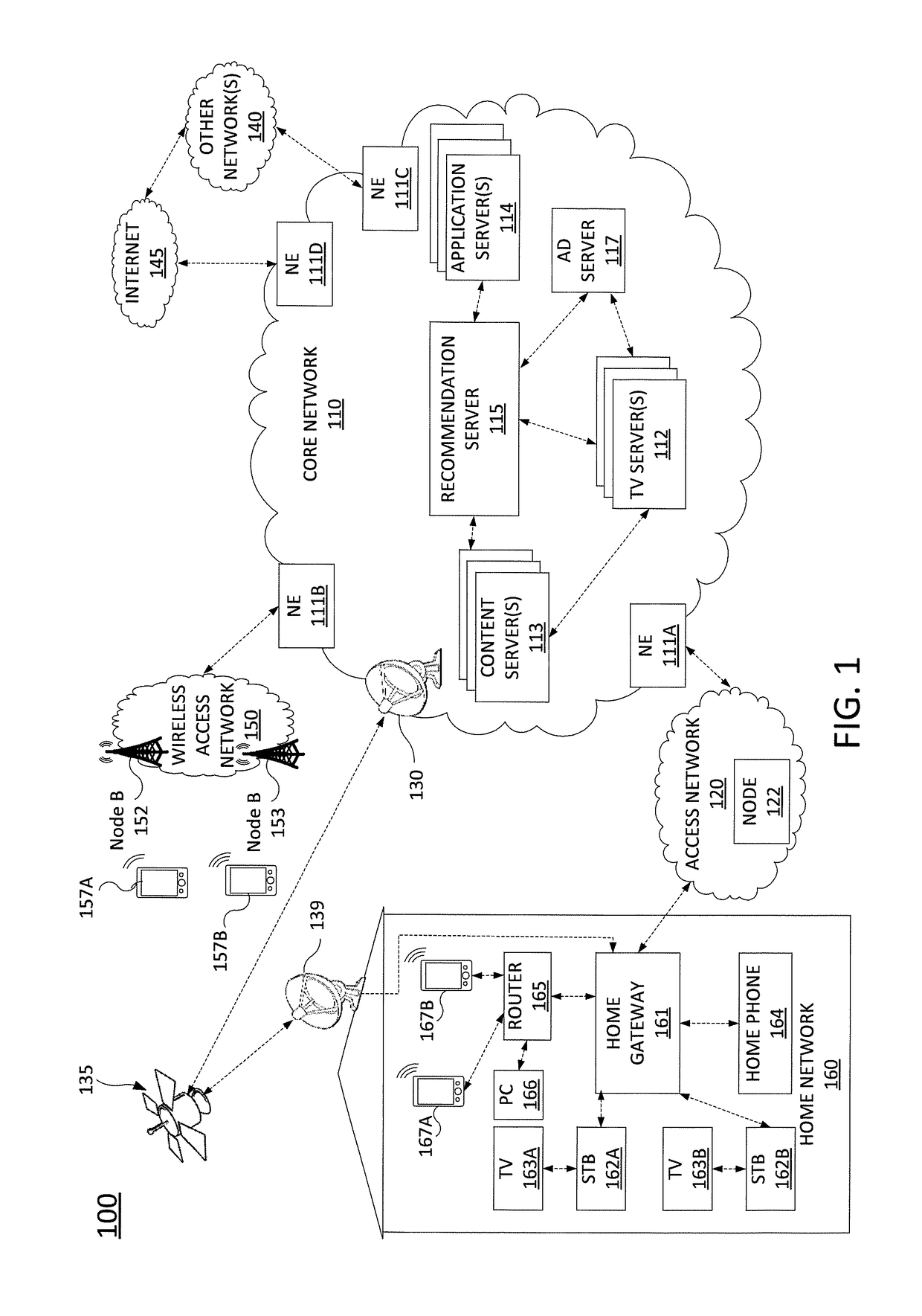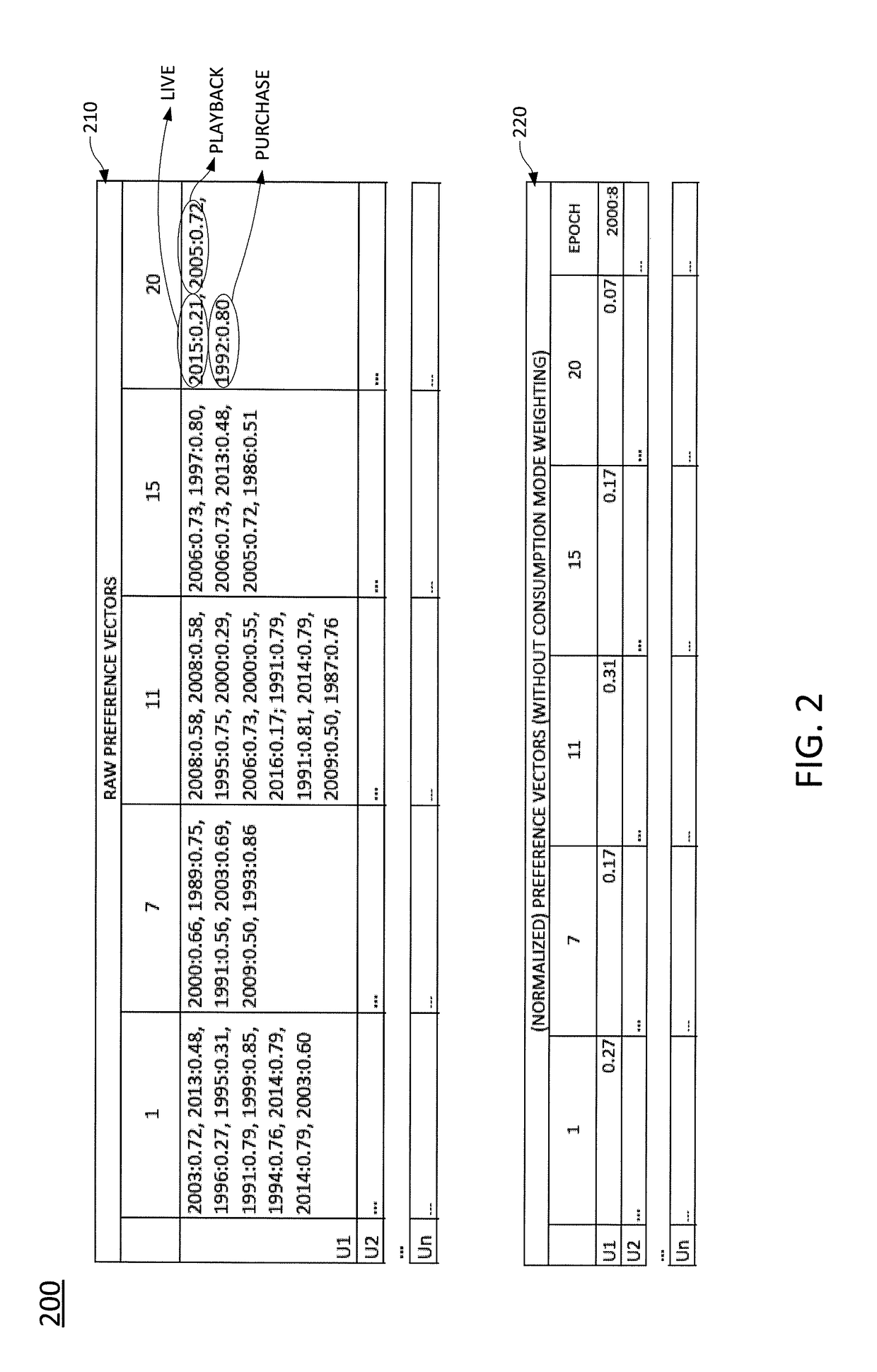Determining recommended media programming from sparse consumption data
a technology of sparse consumption and media programming, applied in multimedia data retrieval, complex mathematical operations, instruments, etc., can solve problems such as inaccurate recommendations or irrelevant to actual interests of users
- Summary
- Abstract
- Description
- Claims
- Application Information
AI Technical Summary
Benefits of technology
Problems solved by technology
Method used
Image
Examples
Embodiment Construction
[0012]Recommendation Systems (RS) generally utilize Content Based (CB) or Collaborative Filtering (CF) in the generation of recommended content. However, for users with sparse viewing history, these methods may fail to generate a reasonably sized or diverse recommendation set.
[0013]Examples of the present disclosure create an entity matrix comprising rows, or vectors corresponding to different entities associated with different media programs, such as cast members of various film different content, and columns corresponding to attributes of the different media programs, such as keywords, genres, themes, etc. For instance, for a particular cast member, a first film in which the cast member has appeared is considered. The cast member may be identified as having appeared in the film based upon public or non-public data source(s). The keywords, genres, themes, etc. for the film are also extracted from the data source(s). Entries are then made in the row for the cast member within the co...
PUM
 Login to View More
Login to View More Abstract
Description
Claims
Application Information
 Login to View More
Login to View More - R&D
- Intellectual Property
- Life Sciences
- Materials
- Tech Scout
- Unparalleled Data Quality
- Higher Quality Content
- 60% Fewer Hallucinations
Browse by: Latest US Patents, China's latest patents, Technical Efficacy Thesaurus, Application Domain, Technology Topic, Popular Technical Reports.
© 2025 PatSnap. All rights reserved.Legal|Privacy policy|Modern Slavery Act Transparency Statement|Sitemap|About US| Contact US: help@patsnap.com



